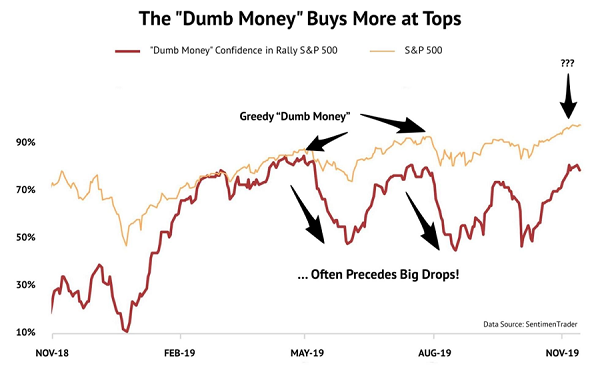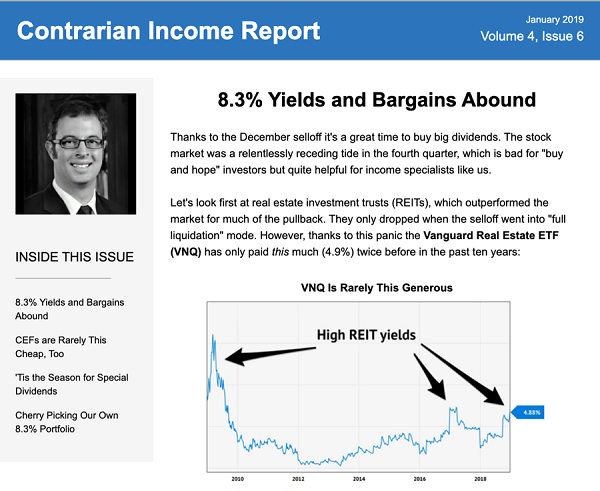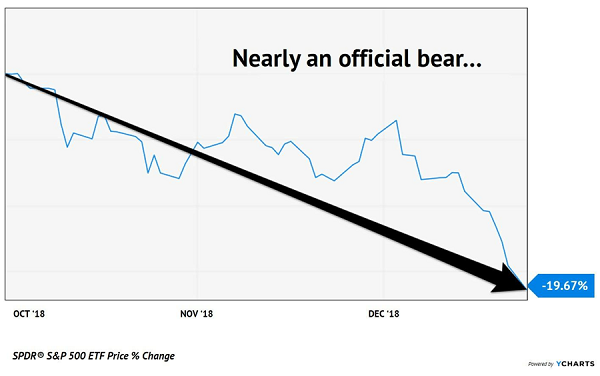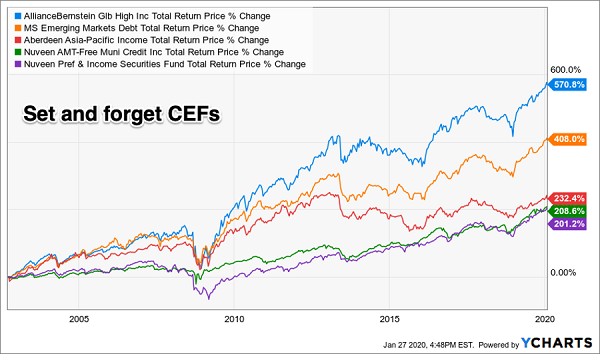A big thank you to the 1,640 subscribers who attended our Contrarian Income Report webcast! As discussed on the call, I did my best to address pre-submitted questions during the session.
Even more questions came in during the live webcast. (I love the enthusiasm!) As you know, while I’m not allowed to give personal investment advice, I do read every question. And I like to use this weekly column to address the most common questions. So, let’s chat about your shared thoughts, curiosities and concerns.
Q: Should I be worried about the latest coronavirus? If not me, how about my portfolio?
While my wife enjoys making fun of my herbal tea concoctions (which heavily feature anti-inflammatory roots such as ginger and turmeric), I should probably refrain from dishing personal health advice as well. So, considering the coronavirus news, let’s look at the financial and historical parallel of SARS, a coronavirus predecessor that also jumped from animals to humans in China nearly 17 years ago.
(Note: As I write, Chinese officials are currently suggesting the virus is contagious in people before they show any symptoms. US health officials remain doubtful this is true, which suggests the virus may be more “containable” than current headlines suggest.)
SARS was a short-term disaster for China, but nothing more than a road bump. (And, if we’re being blunt, a buying opportunity for investors.)
The market’s sudden selloff, which is being attributed to coronavirus fears, has been overdue by sentiment measures. Since November we’ve been staring at bullish “dumb money” (via SentimenTrader), yet the market has continued higher and higher regardless:

The “Jos”—individual investors like Joseph and Jolene who buy high and sell low—have simply been too giddy for too long. We “calculated contrarians” knew some pullback was coming, and here it is. Let’s not panic and, better yet, let’s prepare our shopping lists!
Q: I am concerned about the CIR portfolio. There are only a few buys available today. Are you going to add any new recommendations or increase the buy limits on the current portfolio?
We’ve had this happen just a few times in the history of CIR. It’s usually brief and also indicative that a pullback is just around the corner. It always works itself out.
This time last year, we were shooting income whales in a barrel. Our portfolio paid 8.3%, everything was a screaming buy and you could have closed your eyes and thrown a dart at your dividend board and done great. I suggested opening your eyes to the January 2019 edition of CIR to throw that dart, but you get the idea…

Fast forward to today and the pickings are a bit thinner. But, to your initial question, my answer is “all of the above”—new recommendations and increased buy limits.
I’m hot on the beat of a fat dividend payer with excellent growth potential. Thanks to the recent market dip, it’s a great bargain. Stay tuned to your February issue of the Contrarian Income Report for the details on this new play, as well as other top pullback payout plays.
Q: Many of your stocks and funds have risen considerably in the past year. Should we be taking profits on them and moving to cash until this pullback is complete?
As income investors, the only way we can lose is by sitting on the sidelines. (This is true for most market participants, but especially us. Our edge is our ability to turn our principal into “cash flow” and to do this we must be in the market.)
Let’s revisit the example we discussed on the webcast. Say you piled your retirement funds into CIR picks at the worst possible time in the last decade. It was October 1, 2018 and the S&P 500 was about to drop 19.7%. Yikes!
Even the Worst Market Timer…

A poor sense of timing was no problem. In fact, the bigger mistake would have been sitting on cash. Very few “permabears” who claim to be in cash on every pullback ever get back into the market. As a result, they never catch up. After all, how can you “spot” contrarians like us a cool 16% total return?
… Generated 16% Total Returns (Double the S&P 500!)

Successful income investing is simple with CIR. Buy the buys, hold the holds and don’t sweat anything else.
Q: I am looking for a set and forget CEF. Is there such an animal today? I am looking to improve upon previous paltry 3.5% returns over the last 10 years.
If you tell me that you’re going to buy a CEF today (or a basket of them) and not look at them for another decade, then yup, there are such animals.
CEFs can be volatile because they trade like stocks. And equities are subject to the whims of individual investors, who wake up every day looking for something to freak out about in the financial world. But if you can put the day-to-day gyrations in perspective, these are great long-term income vehicles.
And let’s go bigger than the past decade and look back 20 years. We have five CEFs in our portfolio that were around back then, and all five at least tripled their investors money. Our emerging market fund AllianceBernstein Global Income (AWF) was the star, rolling 571% higher!
Set and Forget ‘Em (and Don’t Look or Sell)

Yours Now: 17 “Crash-Proof” Stocks With Safe Cash Payouts Up to 9.5%
I’ve got 5 rock-steady dividend plays waiting for you—but with one twist: they’ll pay you a rock-solid 8.2% yield off the hop!
And that’s just the average! One of these unusual nest-egg “sentries” throws off a safe—and growing!—9.8% payout.
Every one of these unsung income plays is waiting for you in my 5-stock “pullback-proof” portfolio, which you can discover yourself right here.
Here’s the upshot: you could very well have enough dividend income from this “instant portfolio” to retire on dividends alone with a $500K nest egg, thanks to the $41,000 income stream these defensive superstars give you.
That’s not all.
Because the next issue of my Contrarian Income Report service publishes in a week, with fresh updates on the 17 stocks and funds in its portfolio, which hand CIR members massive yields of 8.5%, 9.1% and even upwards of 10%.
And I’m going to send all 17 of these cash-rich plays your way, too!
